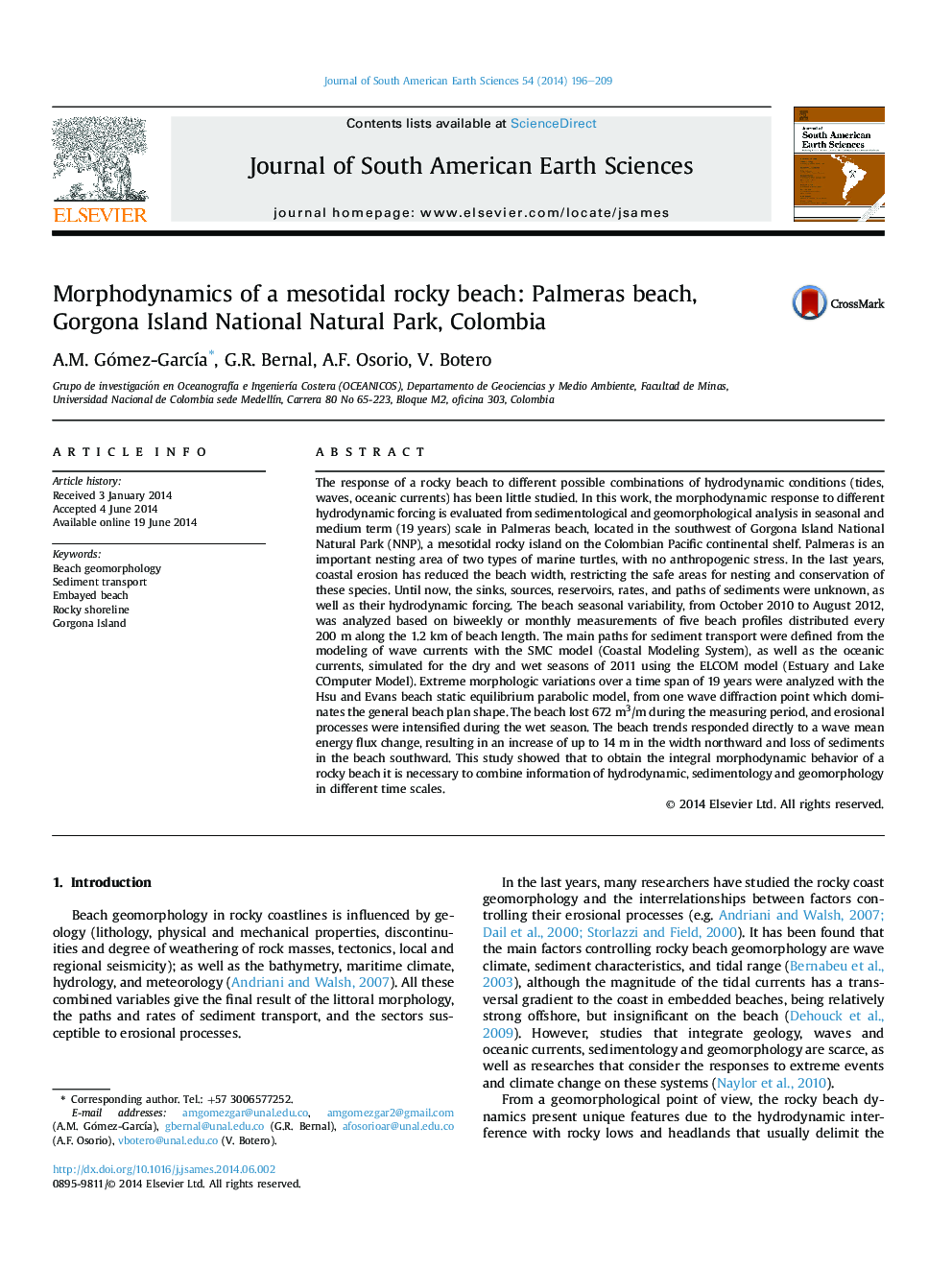| کد مقاله | کد نشریه | سال انتشار | مقاله انگلیسی | نسخه تمام متن |
|---|---|---|---|---|
| 4682323 | 1635155 | 2014 | 14 صفحه PDF | دانلود رایگان |
• We implemented an integral and innovative methodology to study a mesotidal rocky beach.
• We study the beach hydrodynamic, sedimentology and morphology and their relationships from seasonal to inter-annual scales.
• The sedimentary budget between October 2010 and August 2012 showed a loss of 672 m3/m, especially southern of the beach.
• The beach has a tendency to swinging in response to intra-annual variations in the angle of incidence of deep water waves.
• The northern and central parts of the beach are the safest for nesting turtles and the turtle nursery present there.
The response of a rocky beach to different possible combinations of hydrodynamic conditions (tides, waves, oceanic currents) has been little studied. In this work, the morphodynamic response to different hydrodynamic forcing is evaluated from sedimentological and geomorphological analysis in seasonal and medium term (19 years) scale in Palmeras beach, located in the southwest of Gorgona Island National Natural Park (NNP), a mesotidal rocky island on the Colombian Pacific continental shelf. Palmeras is an important nesting area of two types of marine turtles, with no anthropogenic stress. In the last years, coastal erosion has reduced the beach width, restricting the safe areas for nesting and conservation of these species. Until now, the sinks, sources, reservoirs, rates, and paths of sediments were unknown, as well as their hydrodynamic forcing. The beach seasonal variability, from October 2010 to August 2012, was analyzed based on biweekly or monthly measurements of five beach profiles distributed every 200 m along the 1.2 km of beach length. The main paths for sediment transport were defined from the modeling of wave currents with the SMC model (Coastal Modeling System), as well as the oceanic currents, simulated for the dry and wet seasons of 2011 using the ELCOM model (Estuary and Lake COmputer Model). Extreme morphologic variations over a time span of 19 years were analyzed with the Hsu and Evans beach static equilibrium parabolic model, from one wave diffraction point which dominates the general beach plan shape. The beach lost 672 m3/m during the measuring period, and erosional processes were intensified during the wet season. The beach trends responded directly to a wave mean energy flux change, resulting in an increase of up to 14 m in the width northward and loss of sediments in the beach southward. This study showed that to obtain the integral morphodynamic behavior of a rocky beach it is necessary to combine information of hydrodynamic, sedimentology and geomorphology in different time scales.
Figure optionsDownload as PowerPoint slide
Journal: Journal of South American Earth Sciences - Volume 54, October 2014, Pages 196–209
